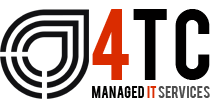General Cyber Security- Types of Attacks
The workplace in the modern world relies almost totally on technology to function at the level to which we have all grown used. Because of this, cybercrime has increased significantly over the past year or two. Because technology now rules the globe, cybersecurity should be your top business priority. Everyone should have at least a basic understanding of cyber security and their responsibility in protecting their internet-connected devices from cybercrime because the majority of the population has access to internet-connected devices, and most people have numerous of them. Although many business owners are unaware of how crucial cyber security is, there is a case to be made that your concerns about the security of your cyber landscape should take precedence over your worries about the physical security of your organisation. Would you let the weather in by leaving the front door open all day? No! Why then do you employ the same technical landscape?
Cybercriminals are intelligent. They are using the increase in web-connected devices in the hands of people who, quite frankly, lack the knowledge necessary to use them safely as an opening to launch an attack. They feel that robbing someone from the comfort of their own room is preferable to going into a store and doing it in person and are attracted by the supposed anonymity that comes with cybercrime.
The rest of the essay will showcase the various strategies cybercriminals employ to target your company.
Types of Attacks
Ransomware
Your data is locked and encrypted during a ransomware assault. The cybercriminals then demand a ransom in exchange for the promise to restore your access, after which they will disappear. Cybercriminals utilise haste to persuade you to pay the ransom; they impose deadlines on payments and make threats to remove the files if they aren’t received as requested within the specified time frame. Naturally, this often results in business owners paying the ransom. Some people believe paying a ransom since your data is almost priceless is acceptable, but do you really believe you can trust a criminal to restore your access? You can’t, of course! Paying would be a bad idea since you would be signalling to the online crooks that you have the money to pay and are ready to do so.
Phishing
Attacks using phishing also use deceit. A cybercriminal will assume another person’s identity, usually that of an authoritative person from a reliable source, such a bank or perhaps even management. To obtain confidential information, they deploy this trick in phoney or fraudulent emails. Phishing emails are the delivery system for the malicious links that serve as the impetus for the cybercriminal’s attack; unfortunately, the use of a false identity and the imposed time constraints force the user to make a decision on the spur of the moment rather than carefully considering all of their options as is best practise. The user will unwittingly provide access—or possibly even control—to the cybercriminals by clicking on the infected link since they think the ruse could be devastating.
Smishing
The sole distinction between Smishing and a Phishing scam is that the former uses SMS messaging while the latter uses email. Both are straightforward to grasp.
Malware
Malware is created with the goal of doing harm, wreaking havoc, and ultimately stealing data. In contrast to other cyberattacks, malware attacks are frequently carried out by a group of cybercriminals rather than a single person when their goal is to generate money by either directly spreading the malware or by selling the software to other cybercriminals on the Dark Web.
There are many different kinds of cyberattacks, but the few we looked at are probably the most prevalent and the ones you and your team will probably be fending off every day. Despite this, all cyberattacks, not just the most frequent ones, have the potential to entirely shut down your company if they are severe enough. Your systems and, more crucially, your team need to be outfitted with the tools and knowledge required to defeat them because you must devise a plan of action and stop them in their tracks at the earliest chance.
We’ll now go over some of the principles of cyber security so you can rest easy knowing your company can carry on as usual even if a cyberattack is launched or, in the worst situation, is successful.
Modern Technology to Safeguard your Success
Your business depends on technology, and we want you to recognise the benefits it can bring when used in tandem with the most modern tools available. We offer the IT help you require when you require it at 4TC because we appreciate simplicity and transparency. This support includes a promise that your technology is safe from all kinds of online dangers, that it will help you run your business more efficiently, and that it will always be upgraded to the most recent version. We will assist you and direct you towards a safe and prosperous future where technology will be your buddy. Call us right away to learn how we can assist you.

